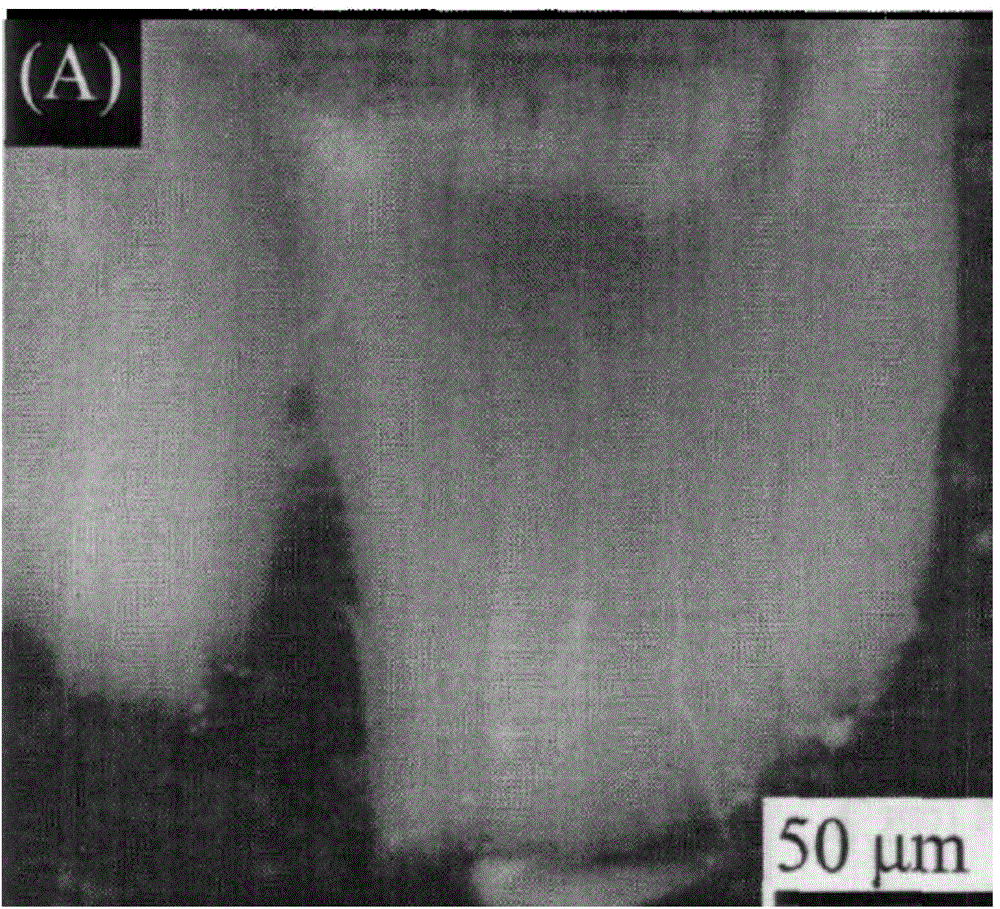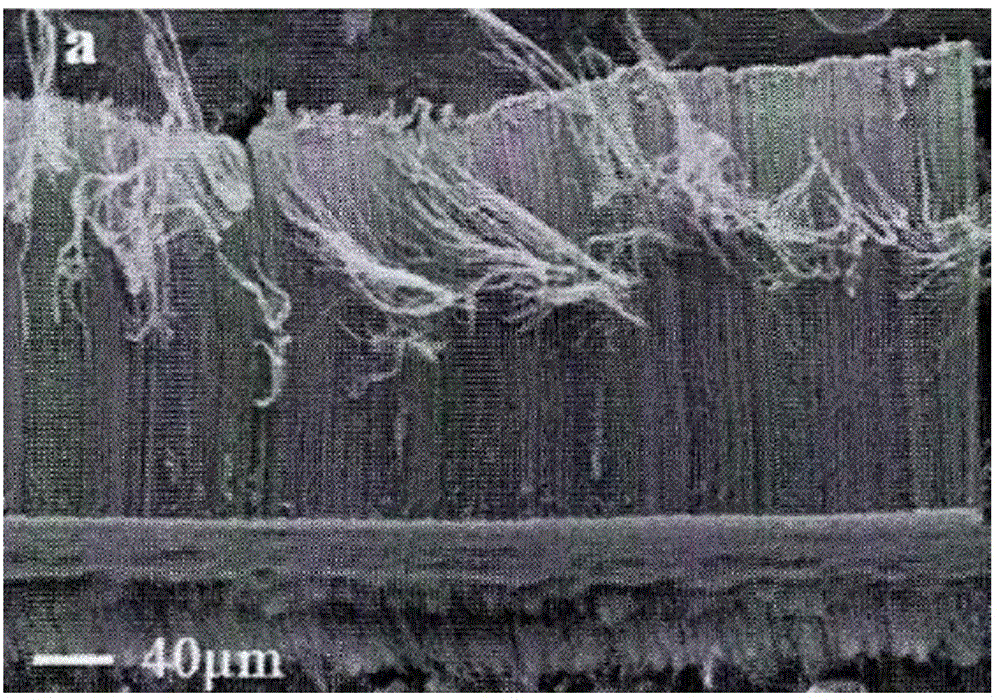Method for directly growing carbon nano tube array on fiber substrate
A technology of carbon nanotubes and substrates, which is applied in the field of nanomaterial preparation, can solve the problems that the excellent properties of one-dimensional materials cannot be effectively exerted, affect the research and practical application of carbon nanotube properties, and damage the mechanical properties of carbon fiber substrates. Achieve the effect of easy follow-up utilization, low cost, and beneficial to large area
- Summary
- Abstract
- Description
- Claims
- Application Information
AI Technical Summary
Problems solved by technology
Method used
Image
Examples
Embodiment 1
[0041] The carbon fiber substrate was vacuum treated at 600°C for 2 hours, then ultrasonically cleaned with dilute hydrochloric acid, acetone, alcohol, and deionized water one by one, and dried for use. With 2M Fe(NO 3 ) 3 Solution and tetraethyl orthosilicate to prepare a sol, and the sol was uniformly coated on the surface of the carbon fiber substrate by the spin coating method, the spin coating speed was 4000 rpm, and the spin coating time was 1 minute. Place the carbon fiber substrate coated with Fe-containing sol in the chamber of the chemical vapor deposition system, start to heat up, the target temperature is 300°C, keep it for 1 hour, pass in inert gas nitrogen, and keep it for 30 minutes; the furnace temperature continues to rise to 650°C, continuously feed nitrogen for 60 minutes; simultaneously feed reducing gases hydrogen and methane. The hydrogen:methane:nitrogen ratio is 1:4:10. Control the closing degree of the vacuum butterfly valve to ensure that the air p...
Embodiment 2
[0043] The carbon fiber substrate pretreatment process is the same as in Example 1. With 1.5M Fe(NO 3 ) 3 The sol was prepared from the solution and methyl orthosilicate, and the sol was uniformly coated on the surface of the carbon fiber substrate by the dipping and pulling method, and the pulling speed was 10 cm / min. After the wet film was heat-treated at 100°C, it was dipped and pulled repeatedly, and the number of times of pulling was 5 times. Place the carbon fiber substrate coated with Fe-containing sol in the chamber of the chemical vapor deposition system, start to heat up, the target temperature is 400°C, keep it for 1 hour, pass in inert gas nitrogen, and keep it for 30 minutes; the furnace temperature continues to rise to At 750°C, nitrogen gas is continuously fed in for 60 minutes; at the same time, reducing gases hydrogen and methane are fed in. The hydrogen:methane:nitrogen ratio is 1:4:10. Control the closing degree of the vacuum butterfly valve to ensure th...
Embodiment 3
[0046] The silicon carbide fiber substrate treatment process is the same as in Example 1. With 1M Ni(NO 3 ) 3 The sol was prepared with methyl orthosilicate, and the sol was uniformly coated on the surface of the carbon fiber substrate by the spin coating method, the spin coating speed was 5000 rpm, and the spin coating time was 30 seconds. Place the carbon fiber substrate coated with Ni-containing sol in the chamber of the chemical vapor deposition system, start to heat up, the target temperature is 300°C, keep it for 1 hour, pass in the inert gas nitrogen, and keep it for 30 minutes; the furnace temperature continues to rise to 700°C, continuously feed nitrogen for 60 minutes; simultaneously feed reducing gases hydrogen and methane. The hydrogen:methane:nitrogen ratio is 1:5:10. Control the closing degree of the vacuum butterfly valve to ensure that the air pressure in the whole reaction process is about 1000Pa; after 30 minutes of reaction, the growth is complete. Stop ...
PUM
 Login to View More
Login to View More Abstract
Description
Claims
Application Information
 Login to View More
Login to View More - R&D
- Intellectual Property
- Life Sciences
- Materials
- Tech Scout
- Unparalleled Data Quality
- Higher Quality Content
- 60% Fewer Hallucinations
Browse by: Latest US Patents, China's latest patents, Technical Efficacy Thesaurus, Application Domain, Technology Topic, Popular Technical Reports.
© 2025 PatSnap. All rights reserved.Legal|Privacy policy|Modern Slavery Act Transparency Statement|Sitemap|About US| Contact US: help@patsnap.com



